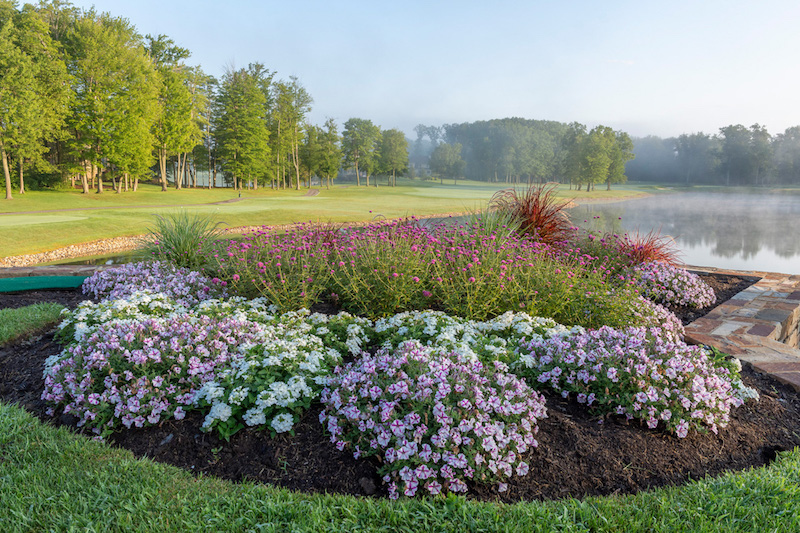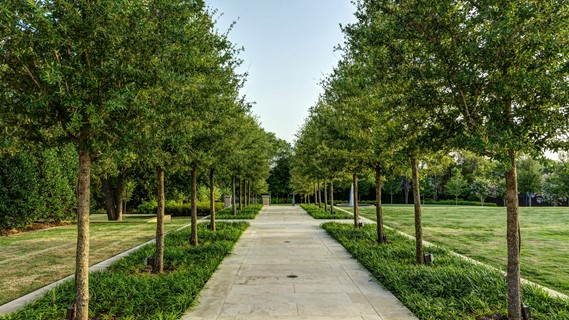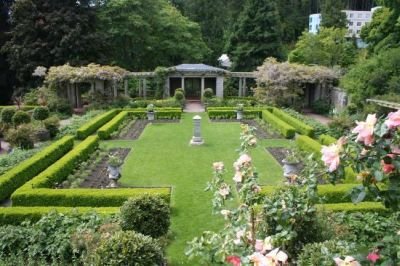Facts About Hilton Head Landscapes Uncovered
Facts About Hilton Head Landscapes Uncovered
Blog Article
Some Ideas on Hilton Head Landscapes You Need To Know
Table of ContentsThe Buzz on Hilton Head LandscapesA Biased View of Hilton Head LandscapesAn Unbiased View of Hilton Head LandscapesThe 9-Minute Rule for Hilton Head Landscapes4 Easy Facts About Hilton Head Landscapes DescribedThe Single Strategy To Use For Hilton Head LandscapesAn Unbiased View of Hilton Head LandscapesThe Main Principles Of Hilton Head Landscapes
Kind compatibility is also a significant part of unity in designone or 2 noticeably various forms are good for contrast and emphasis, however normally all various other kinds need to have some resemblances for an unified appearance. Appearance describes exactly how coarse or great the surface of the plant or hardscape product feels and/or looks.
Examples of plants with coarse texture include philodendrons, agaves, bromeliads, hollies, palms, and hydrangeas. Features that produce fine texture include little vegetation; thin, strappy leaves (yards) or tall, thin stems; small, thick twigs and tiny branches; long stems (creeping plants); and little, fragile flowers.
What Does Hilton Head Landscapes Do?
Most plants are average texture, because they can not be explained as having either coarse or fine appearance. They are identified by medium-sized fallen leaves with easy shapes and smooth sides. The average-sized branches are not densely spaced nor commonly spaced, and the total type is generally rounded or mounding. Medium-textured plants serve as a history to web link and unify the coarse- and fine-textured plants.

To make a room really feel smaller sized, put the rugged appearances along the external border and the great appearances closest to the customer. The detail of the crude appearance makes the plants show up closer and makes the area feel smaller sized. The regarded structure of plants can additionally transform with the range from the plant.
Some Ideas on Hilton Head Landscapes You Need To Know
Strong colors boost the comparison and make the appearance appear coarser, while muted shades can flatten structure. Hardscape with a crude texturesuch as really rough rocks and vibrant, huge timberstends to make all plant material show up much more moderate textured. Developers usually develop an appearance research study (Figure 8) theoretically to aid make a decision the plan of plant materials.
Figure 8. Appearance study. Color in plant material and hardscape adds interest and selection to the landscape. Color is one of the most obvious aspect in the landscape and is typically the focus of many house owners; however, it is additionally the most short-lived component, generally lasting just a couple of weeks a year for specific plants.
The Best Strategy To Use For Hilton Head Landscapes
An easy summary of the shade wheel consists of the 3 key shades of red, blue, and yellow; the three second shades (a mix of 2 primaries) of green, orange, and violet; and six tertiary shades (a mix of one adjacent primary and second shade), such as red-orange. Color concept describes the relationship of colors per other and just how they should be utilized in a structure.

Similar (in some cases called unified) color design are any kind of three to five colors that are surrounding on the color wheel, such as red, red-orange, orange, yellow-orange, and yellow, or blue, blue-violet, and violet (landscaping hilton head sc). The colors are relevant per other because they normally consist of two primaries mixed to form an additional and 2 tertiary shades, which implies they share typical buildings
Corresponding shades are usually located normally in flowers; an usual set is yellow and violet. Color is found in the blossoms, foliage, bark, and fruit of plants.
The Ultimate Guide To Hilton Head Landscapes
Environment-friendly foliage in all its various tones is the dominant color by amount, however other colors record focus quicker as a result of their high comparison to the color green. Color is likewise found in structures, rocks, pavers, wood, and furnishings. Most colors in all-natural products, such as stone and timber, are commonly muted and often tend to be variants of brownish, tan, and light yellow.
Color is a crucial element for creating interest and range in the landscape. Shades have properties that can impact emotions, spatial perception, light top quality, equilibrium, and emphasis. One residential or commercial property of color is explained about temperaturecolors seem trendy or warm and can impact feelings or feelings. Great shades often tend to be calming and should be made use of in locations for leisure and tranquility.
What Does Hilton Head Landscapes Mean?
The "temperature level" of colors can additionally impact the perception of range. Awesome shades have a tendency to decline and are perceived as being further away, making a room really feel bigger. Warm colors tend to advancement and are perceived as being more detailed, making look what i found a space feel smaller sized. Color can also be used to record attention and straight sights.
Bright yellow, which has the greatest intensity, likewise has a high contrast with all other colors (commonly described as a "pop" of color) and should be utilized sparingly. A small amount of extreme shade has as much visual weight as a big amount of a more suppressed or weaker shade.
Similar (occasionally called unified) shade systems are any type of three to five shades that are nearby on the color wheel, such as red, red-orange, orange, yellow-orange, and yellow, or blue, blue-violet, and violet. The colors belong to every other because they normally include two primary colors blended to develop a second and 2 tertiary colors, which suggests they share common residential or commercial properties.
The 6-Second Trick For Hilton Head Landscapes
They often tend to have high comparison in between them. One of the most typical sets are violet and yellow, red and green, and blue and orange. Complementary colors are frequently found normally in blossoms; a typical set is yellow and violet. Color is located in the blossoms, foliage, bark, and fruit of plants.
Environment-friendly foliage in all its different shades is the dominant shade by amount, yet various other shades record attention more conveniently due to their high contrast to the shade green - landscapers in bluffton sc - https://www.quora.com/profile/Steven-Gonzales-256. Shade is likewise located in buildings, rocks, pavers, wood, and furniture. A lot of colors in natural products, such as rock and wood, are usually soft and tend to be variants of brown, tan, and pale yellow
The Facts About Hilton Head Landscapes Revealed
Shade is a vital component for developing rate of interest and range in the landscape. Colors have properties that can affect feelings, spatial assumption, light high quality, balance, and focus. One residential property of color is described family member to temperaturecolors seem amazing or warm and can influence feelings or sensations. Trendy shades have a tendency to be soothing and must be utilized in locations for leisure and calmness.
The "temperature" of colors can also affect the understanding of distance. Trendy colors often tend to decline and are regarded as being further away, making a space feel larger. Cozy colors tend to advance and are regarded as being better, making an area really feel smaller. Color can also be utilized to record focus and straight views.
Intense yellow, which has the highest intensity, likewise has a high contrast with all various other shades (typically explained as a "pop" of color) and ought to be used sparingly. A tiny quantity of extreme shade has as much visual weight as a huge quantity of an extra restrained or weak color.
Report this page